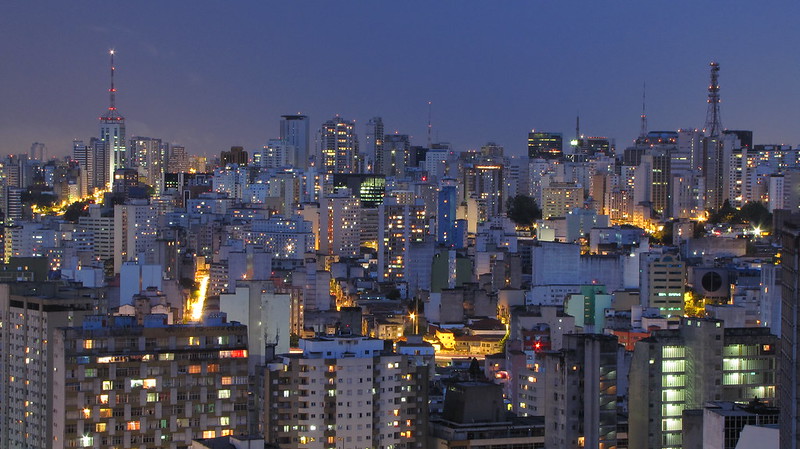The social and economic fallout of Covid-19 presents a historic opportunity for Latin America and Caribbean (LAC) to align climate action with developmental goals.
With well over half a million deaths since the start of the pandemic and an estimated economic contraction of 7.4% in 2020, the region is the world’s worst affected, impacting not only on direct health, but on jobs, infrastructure and the economy as a whole.
While the virus is still raging, governments must begin looking towards recovery strategies, and considering climate change and biodiversity is key for a region so heavily intertwined with the natural world and dependent on fossil fuels. LAC needs to embrace a transformative approach. It’s an efficient way to secure sustainable and inclusive development, deliver the jobs we need and address existing inequalities that the pandemic has so profoundly highlighted.
A sustainable recovery must have a strong focus on increasing the resilience of health, education, housing and social systems, to mitigate the worst effects of future climate and pandemic impacts.
This could be achieved by future-proofing basic utility infrastructure, like energy, water, and transport, to provide cheap low impact services to populations while minimising the strain on the environment.
The potential of nature-based solutions must also be better tapped to help simultaneously reduce emissions and boost resilience to climate impacts. In some cases, for example by restoring mangroves to mitigate coastal flooding, these solutions could even be carbon negative.
The role of nature was recently highlighted by the Dasgupta Review on the Economics of Biodiversity, which calls for fundamental changes to our economies if we are to reverse biodiversity loss, protect and enhance our prosperity and prevent climate breakdown. This is especially relevant for Latin America and the Caribbean – the world’s biodiversity superpower – holding around 40% of the world’s biodiversity.
But for this kind of recovery to materialise, there needs to be a shift in financial systems, which currently lack serious consideration of sustainable planning and budgeting, are still encouraged to invest in fossil fuels, and are thus vulnerable to the risks of investing in stranded assets.
Recently, the Inter-American Development Bank (IDB) released its Climate Change Action Plan 2021-25, a document that speaks to the inherent tensions between recovering from the health emergency and taking action on climate change.
It looks at progress the organisation has made since 2016 “to support the region’s need for low-carbon and climate-resilient development finance and its plan to raise climate ambition continuously,” and has a strong focus on aligning with goals set out by the Paris Agreement ratified in the same year.
The IDB will ensure its operations assist governments in sustainable planning, policy, and the transitioning of fiscal systems to ally economies of growth with climate action.
It also regards the recovery as a development process far into the future, and while the report focuses particularly on the next five years, it also considers what is needed for the region to confidently achieve the Paris goals of building net-zero emission and climate-resilient economies by 2050.
It’s this long-term approach that is essential for LAC, with help from the IDB, to ensure a just transition to net-zero emissions and avoid being locked into carbon-intensive development paths, which would inevitably result in more financial risks further down the line.
Encouragingly as we saw at the Climate Ambition Summit last December, many LAC countries announced more ambitious emission reductions for 2030 and established goals to achieve net-zero emissions by mid-century. Countries from Jamaica to Chile are connecting climate action with sustainable recovery, a win-win to deliver on global climate and biodiversity goals supporting development priorities.
The immense damage caused by the pandemic, worsening climate impacts, the steep drop in the cost of renewable energy and electric vehicles combined with growing business interest is sharpening the region’s resolve to back this transformation. The region must embrace this agenda or otherwise find itself left behind technologically and economically as the global race to reach net-zero emissions accelerates.
To secure this brighter future, we need a whole system change, where project planning cuts across energy, transport, industry, land use, health, education and jobs.
And now is the best time to vastly scale-up existing efforts across LAC through the arrangement and implementation of national decarbonisation plans.
In November 2020, the IDB published a paper which found that Costa Rica’s national decarbonisation plan will bring $41 billion in net benefits between 2020 and 2050. The approach would, for example, increase forest carbon sequestration leading to greater ecosystem services, switch to electric vehicles increasing air quality, promote energy efficiency within buildings decreasing maintenance costs, and much more.
The paper’s aim is to help the government better understand climate policy and decarbonisation plans through a cost-benefit analysis and the recommendation of tangible and immediate changes.
Now, the IDB is looking at applying lessons learned to neighbouring countries such as Peru, Chile and Colombia and intends to promote cross-sector engagement between environmental ministries and key private sectors actors, which can help shift the discussion solely from climate mitigation to that of sustainable development. The appetite for sustainable recovery is increasing. Now must be the time to seize this opportunity.
Read: Jobs in a Net-Zero Emissions Future in Latin America and the Caribbean
Graham Watkins is chief of the climate change division at the IDB. Follow him on Twitter here: @GrahamWatkins.
This post was sponsored by the Inter-American Development Bank. See our editorial guidelines for what this means.
